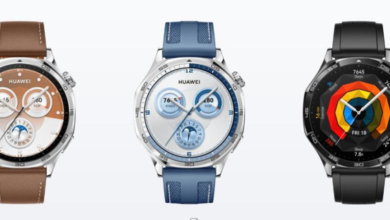What Should You Know About Pen, Inkjet, and Thermal Plotters?

Plotters are crucial in creating high-quality, large-format prints for various industries, from architecture to engineering and design. While many types of plotters are available, pen, inkjet, and thermal plotters are some of the most widely used options. Each offers unique benefits based on its printing technology, speed, and precision, making it essential to understand which plotter suits your needs best. Here, we’ll explore the key features, advantages, and ideal applications of pen, inkjet, and thermal plotters to help you make an informed decision.
1. Pen Plotters: Precision for Line-Based Drawings
Pen plotters are known for their exceptional accuracy, making them popular in fields requiring precise line work, such as engineering, architecture, and technical design. Unlike other plotters that spray ink, pen plotters use a mechanical arm to draw directly onto the paper using a pen.
How Pen Plotters Work
Pen plotters follow vector-based instructions to create images by moving the pen along the X and Y axes. This method enables them to produce clean, sharp lines, which is ideal for technical drawings, blueprints, and schematics. Pen plotters are particularly valuable when creating line-based artwork that demands clarity and accuracy.
Advantages of Pen Plotters
Pen plotters excel in accuracy, producing exact line work that is unmatched by other types of plotters. They are reliable for technical and engineering tasks where each line’s placement is crucial. Pen plotters also have a long lifespan as they don’t rely on consumable ink or toner, though they may require pen replacements.
Limitations of Pen Plotters
While highly accurate, pen plotters are slower than inkjet or thermal plotters, as each line is individually drawn. Additionally, they aren’t suitable for producing shaded images or full-colour designs, limiting their application to black-and-white or monochromatic work. Other plotter types may suit projects needing fast output or colour details.
2. Inkjet Plotters: Rich Colour and Fine Detail
Inkjet plotters are widely used in design, graphics, and architecture because they produce vibrant, detailed images. They spray tiny droplets of ink onto paper, producing high-quality prints with smooth gradients and colour depth, making them ideal for full-colour work.
How Inkjet Plotters Operate
Inkjet plotters propel ink droplets from a nozzle onto the media, creating precise, sharp images with excellent colour gradients. This technology makes them versatile, as they can handle various media types, from plain paper to glossy photo paper, allowing for a wide range of applications.
Advantages of Inkjet Plotters
Inkjet plotters can produce highly detailed, colour-rich images, making them ideal for design and architectural work where visual appeal is essential. They are also versatile, as they can print on multiple media types and sizes. This flexibility allows users to create everything from technical drawings to colourful marketing materials, which is why inkjet plotters are a staple in creative industries.
Limitations of Inkjet Plotters
While inkjet plotters offer excellent colour quality, they tend to be slower than laser or thermal plotters, especially for large prints. The cost of ink can also add up over time, particularly for colour-intensive work. To ensure consistent quality, inkjet plotters also require regular maintenance, including nozzle cleaning and ink cartridge replacement.
3. Thermal Plotters: Durability for Outdoor Applications
Thermal plotters use heat to transfer dye or wax-based ink onto media, making them ideal for creating durable, weather-resistant prints. This makes them popular in industrial applications, outdoor signage, and any scenario where the prints must withstand harsh environmental conditions.
How Thermal Plotters Work
Thermal plotters use heat to transfer ink from a ribbon onto the media. This process creates durable, smudge-resistant images that endure exposure to sunlight, moisture, and temperature changes. Thermal plotters are ideal for long-lasting prints, such as outdoor maps, labels, and signage.
Advantages of Thermal Plotters
Thermal plotters are perfect for producing prints that must withstand environmental factors, producing images resistant to fading and smudging. They work well on specialised media, including materials suitable for outdoor use, making them a reliable choice for construction, outdoor advertising, and industrial applications.
Limitations of Thermal Plotters
Thermal plotters typically operate in monochrome or limited colour options, which can limit their applications for colour-rich designs. They may also have higher material costs, as specialised ink or ribbons are required for thermal printing. For projects that demand full-colour detail or artistic representation, inkjet or other plotter types might be more effective.
Choosing the Right Plotter for Your Needs
When selecting a plotter, it’s essential to consider the specific requirements of your work and the advantages each type of plotter offers. Here’s a quick overview to help guide your decision:
- For Precision Line Work: Pen plotters are unmatched in line accuracy, making them ideal for technical drawings and blueprints.
- For High-Quality Colour Prints: Inkjet plotters offer rich, vibrant colours and detailed imagery, making them perfect for design and architectural renderings.
- For Durable Prints: Thermal plotters provide weather-resistant, durable prints for outdoor applications or projects needing longevity.
Read also: Free Printable:1vjy7fvjfii= Blood Pressure Log
Key Considerations When Selecting a Plotter
- Speed: Pen plotters may be slower for high-speed printing, while inkjet plotters work best for moderate volumes. Thermal plotters are often faster than pen plotters but slower than laser options.
- Cost: Inkjet plotters may incur ongoing costs due to ink replacements, while thermal plotters incur higher material costs for specialised inks. Pen plotters, while durable, can be more time-intensive.
- Print Durability: Thermal plotters are the best choice for outdoor or high-durability needs, while inkjet and pen plotters are better suited for indoor or technical applications.
In conclusion, understanding the differences between pen, inkjet, and thermal plotters allows you to choose the right tool for your projects. With various types of plotters tailored for specific tasks, each brings unique benefits, from the detailed line work of pen plotters to the vibrant colours of inkjet and the durability of thermal prints. By aligning your needs with these strengths, you can select a plotter that best supports your professional goals, whether focused on design, technical drawings, or long-lasting outdoor prints.






